lightning
 Any time you are working with or storing gun powder or other explosives, you run the risk of an explosion. I don’t think that any such explosion is death-free, unless possibly if the factory or warehouse is empty at the time. That is unlikely, because most of these places have at the very least, security personnel working there 24/7 and many run shifts around the clock as well. Of course, that is in today’s world. Back in 1769, however, it is unlikely that people were in the facility 24/7.
Any time you are working with or storing gun powder or other explosives, you run the risk of an explosion. I don’t think that any such explosion is death-free, unless possibly if the factory or warehouse is empty at the time. That is unlikely, because most of these places have at the very least, security personnel working there 24/7 and many run shifts around the clock as well. Of course, that is in today’s world. Back in 1769, however, it is unlikely that people were in the facility 24/7.
A part of the Republic of Venice…Brescia was the site of the Bastion of San Nazaro, a military arsenal and powder storage area. About 200,000 pounds of black powder was stored at the site, enough to destroy about a sixth of the city when a lightning bolt set off the blast in 1769. Because buildings then were not built in such a way as to protect from fire and lightning, there was more risk of disaster than we have today, and there is plenty of 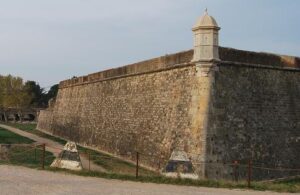 risk today, but possibly less from lightning. Unfortunately, in 1769, disaster came in the form of lightning striking the structure. The ensuing explosion actually devastated the town. When the lightning struck, it started a fire that ignited 198,416 pounds of gunpowder stored at the bastion. As the fire burned, it caused a massive explosion which destroyed one-sixth of the Brescia and killed approximately 6,000 people. Giant rocks and building stones were launched about a kilometer away in every direction, causing massive damage to the surrounding area and crushing unfortunate people. The blast also blew out windows and blew in doors to buildings over a wide area.
risk today, but possibly less from lightning. Unfortunately, in 1769, disaster came in the form of lightning striking the structure. The ensuing explosion actually devastated the town. When the lightning struck, it started a fire that ignited 198,416 pounds of gunpowder stored at the bastion. As the fire burned, it caused a massive explosion which destroyed one-sixth of the Brescia and killed approximately 6,000 people. Giant rocks and building stones were launched about a kilometer away in every direction, causing massive damage to the surrounding area and crushing unfortunate people. The blast also blew out windows and blew in doors to buildings over a wide area.
With a reported death toll of around 6000, this Italian disaster ranks among the worst of the black powder explosions of all time. Who would have thought that an explosion could take out one-sixth of a city? Today,  Brescia has over 200,000 people, and while we don’t know the population back then, we know that a devastation of one-sixth of it killed 3,00 to 6,000 people, so it must have had as many as 50,000 people living there in 1769. The number of fatalities varies among those making estimates, with some saying 3,000. Nevertheless, 3,000 or 6,000 is irrelevant because any loss of life is devastating. This particular tragedy motivated Benjamin Franklin to experiment with the use of lightning rods to protect powder storage buildings. His work found a way to help make buildings a little safer and so lightning rod usage was advised in powder storage buildings…advice apparently taken by the British.
Brescia has over 200,000 people, and while we don’t know the population back then, we know that a devastation of one-sixth of it killed 3,00 to 6,000 people, so it must have had as many as 50,000 people living there in 1769. The number of fatalities varies among those making estimates, with some saying 3,000. Nevertheless, 3,000 or 6,000 is irrelevant because any loss of life is devastating. This particular tragedy motivated Benjamin Franklin to experiment with the use of lightning rods to protect powder storage buildings. His work found a way to help make buildings a little safer and so lightning rod usage was advised in powder storage buildings…advice apparently taken by the British.
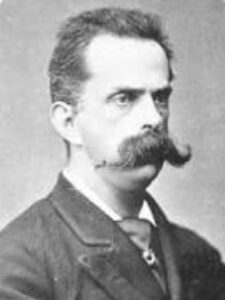 Each year, approximately 40 million lightning strikes hit the ground in the United States, with Tampa, Florida having the most, and Florida being listed as the Lightning Capital of the United States. While Florida is known as the Sunshine State, it is notorious for thunderstorms, lightning strikes and fatalities. On average, Florida has 3,500 cloud to ground lightning flashes per day and 1.2 million flashes per year. Nevertheless, the odds of a human being struck by lightning in a given year are less than one in a million, and strangely, almost 90% of all lightning strike victims survive. The odds of being struck multiple times is even less, with the record being seven times in one lifetime. According to the National Weather Service, lightning causes an average of 62 deaths and 300 injuries in the United States each year. People can be at greater risk for being struck if they participate in outdoor recreational activities or working outside. Regional and seasonal differences can also increase the risk of being struck by lightning. Being outdoors in a lightning storm is certainly not a good idea.
Each year, approximately 40 million lightning strikes hit the ground in the United States, with Tampa, Florida having the most, and Florida being listed as the Lightning Capital of the United States. While Florida is known as the Sunshine State, it is notorious for thunderstorms, lightning strikes and fatalities. On average, Florida has 3,500 cloud to ground lightning flashes per day and 1.2 million flashes per year. Nevertheless, the odds of a human being struck by lightning in a given year are less than one in a million, and strangely, almost 90% of all lightning strike victims survive. The odds of being struck multiple times is even less, with the record being seven times in one lifetime. According to the National Weather Service, lightning causes an average of 62 deaths and 300 injuries in the United States each year. People can be at greater risk for being struck if they participate in outdoor recreational activities or working outside. Regional and seasonal differences can also increase the risk of being struck by lightning. Being outdoors in a lightning storm is certainly not a good idea.
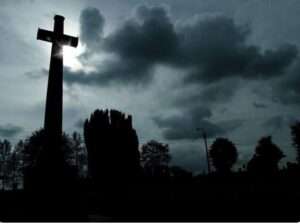
Lightning strikes to humans have been going on as long as times and lightning strikes have been going on. We just hear about them more today than in the distant past. Rarely, humans are struck by lightning, and even with the record of known strikes to humans in one lifetime being seven, it is still a very rare phenomenon. The first time Major Walter Summerford, an Englishman, was said to have been struck by lightning was in 1918 on a World War I battlefield. He was reportedly riding a horse at the time and, while the animal died, Summerford was only temporarily incapacitated by the strike. It’s possible the horse took the bulk of the hit, because Summerford’s feet were not on the ground, meaning that it traveled through Summerford, through the horse, and then on into the ground. That is the nature of lightning. It travels through something with electricity (which humans have, by the way) and then into the ground. So unfortunately, the horse became a part of the connection and actually finished the connection…costing the horse its life. Sad, for sure, but the horse saved the life of its rider.
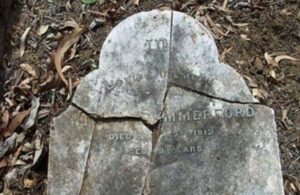
Summerford’s documented additional strikes included two more times…in 1924 and 1930. Then to make him even more unique, Summerford was technically struck after he had died. It happened that two years after he was buried in Vancouver, Canada, a lightning storm went through the area, and lightning actually struck his gravestone in 1936. The bolt was packed with so much power, that Summerford’s gravestone was completely destroyed by that fourth lightning strike. Now that’s got to be the most unique human/lightning encounter story in history.
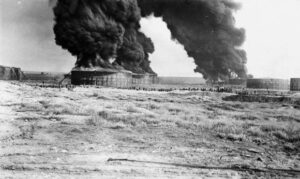 Recently, oil has taken a huge political hit, but most people know that oil is used for far more than the running vehicles. Oil has provided necessary energy to the United States, and even the electric cars can’t exist without petroleum products to make the wiring, tires, seats, floormats, hoses, and much more. In fact, most of us know that there is almost no area of life that isn’t affected by oil. It is part of the makeup of so many things. So, it is silly to think that we can run anything in this world completely void of oil. Living in Wyoming, I know of the value of oil, and many in my family work or have worked in the oil industry.
Recently, oil has taken a huge political hit, but most people know that oil is used for far more than the running vehicles. Oil has provided necessary energy to the United States, and even the electric cars can’t exist without petroleum products to make the wiring, tires, seats, floormats, hoses, and much more. In fact, most of us know that there is almost no area of life that isn’t affected by oil. It is part of the makeup of so many things. So, it is silly to think that we can run anything in this world completely void of oil. Living in Wyoming, I know of the value of oil, and many in my family work or have worked in the oil industry.
Casper, Wyoming has deep roots in the oil industry, and has long provided necessary energy for the nation. Casper’s roots began early on. In 1895, a man named Mark Shannon and a group of Pennsylvania investors opened the state’s first oil refinery in Casper. It was the beginning of an important economic future for Casper and the state. At first, the refinery was able to produce 100 barrels of lubricants per day…not a lot by today’s standards, but in those days, it was phenomenal. Since then, the oil industry has enjoyed a long and successful history, even if the industry did struggle at times. Wyoming is a “Boom-and-Bust” state. We have always been subject to that cycle.
Nevertheless, the early oil fields were quite successful. The Salt Creek and Shannon fields are located in central  Wyoming. With them came the refineries and later, out of necessity, the tank farm oil storage facilities. Storing large quantities of oil, while relatively safe, faces the inevitable possibility of a fire. Safety was always a goal, but it seems an impossible task to stop all fires. The Casper refinery had their first boiler fire on March 5, 1895. Then came the construction of the Casper Tank Farm. According to the Natrona Tribune, reporting on April 18, 1895, “Workmen are now busy sinking a six-hundred-barrel storage reservoir for crude oil and a number of other new tanks and the machinery necessary to finish all grades of oil will be placed as soon as workmen can do so.” I’m sure this was both for storage and safety, but with oil, there is no guarantee.
Wyoming. With them came the refineries and later, out of necessity, the tank farm oil storage facilities. Storing large quantities of oil, while relatively safe, faces the inevitable possibility of a fire. Safety was always a goal, but it seems an impossible task to stop all fires. The Casper refinery had their first boiler fire on March 5, 1895. Then came the construction of the Casper Tank Farm. According to the Natrona Tribune, reporting on April 18, 1895, “Workmen are now busy sinking a six-hundred-barrel storage reservoir for crude oil and a number of other new tanks and the machinery necessary to finish all grades of oil will be placed as soon as workmen can do so.” I’m sure this was both for storage and safety, but with oil, there is no guarantee.
That fact was never made so clear as it was on June 17, 1921, when lightning caused seven oil tanks to catch fire. This became known as the Midwest Oil Tank Farm Battle…and what a battle it was. In those days there was no set plan for fighting a fire in a refinery or a tank farm. It is something you really pray never happens. When lightning struck…in a very real way, they had to figure out how to get it under control, and not lose all of that oil in the tanks. Someone came up with the idea of piercing the tanks below the fire line, thus allowing the oil to drain into the fire dykes. The oil could then be scooped up and pumped into surrounding tanks that were not involved in the fire. It was definitely a great idea, but how were they going to do that?
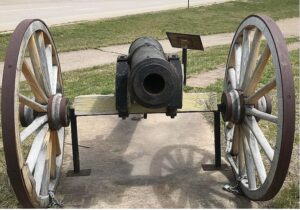
After giving it some thought, they decided to use some cannons from World War I. The first shot from the cannon hit high, and the oil gushed out toward the men firing the cannon. I’m sure that with the fires around them they must have panicked at least a little bit. These men weren’t firefighters. They were soldiers, so fire was not the enemy they were used to fighting. In all, nine shots were fired that day. One was aimed at a very high angle, and it flew off into areas unknown. Two of them went very low and were buried in the dirt under the tanks. Six shots were right on target. In the end, the operation was successful, and the fire was finally brought under control.

 It’s hard for me to believe that my husband, Bob Schulenberg’s aunt, Linda Cole has been gone now for 5 years. She always seemed to be so full of life, and then suddenly, she was gone. In many ways, Linda quit living…really living when her husband, Bobby Cole passed away May 30, 2014. Bobby was her soulmate, and when they married, it was “until death do they part” and so it was, when Bobby passed away. By that time, their kids had both married and moved away, so I’m sure there was a degree of loneliness too, but it was still a shock to all of us, because we had no idea that her death was so close. Heart attacks are that way though. One minute the victim is fine, and the next they aren’t.
It’s hard for me to believe that my husband, Bob Schulenberg’s aunt, Linda Cole has been gone now for 5 years. She always seemed to be so full of life, and then suddenly, she was gone. In many ways, Linda quit living…really living when her husband, Bobby Cole passed away May 30, 2014. Bobby was her soulmate, and when they married, it was “until death do they part” and so it was, when Bobby passed away. By that time, their kids had both married and moved away, so I’m sure there was a degree of loneliness too, but it was still a shock to all of us, because we had no idea that her death was so close. Heart attacks are that way though. One minute the victim is fine, and the next they aren’t.
Linda had lived a number of places in her lifetime, but in many ways, I think she liked Winnemucca, Nevada the best. It was small enough to be likeable, but with the gambling industry there was always something to do. Linda and Bobby both worked in a casino, and had an active social life. They had always loved dancing, especially square dancing, and while I don’t know if they had a place to dance in Winnemucca, they did when they were in Kennebec, South Dakota. They also love to pay cards, which might be why they enjoyed the casinos so much. They used to spend hours playing cards with any of the family who came to visit.
Prior to moving to Winnemucca, they had owned a hotel in Kennebec, but in a strange twist of fate, the building 
 was struck by lightning years ago, and actually burned to the ground. I had never known of a building that was destroyed by lightning, but it does happen. With their source of income gone, and Kennebec being the extremely small town it is, there was nothing to do, but to move away. So, they went to Winnemucca, Nevada. It was a huge life change, but one they were excited to make. They enjoyed life in Winnemucca, enjoyed being grandparents, and each other. They had a good life. Today would have been Linda’s 75th birthday. Happy birthday in Heaven, Linda. We love and miss you very much.
was struck by lightning years ago, and actually burned to the ground. I had never known of a building that was destroyed by lightning, but it does happen. With their source of income gone, and Kennebec being the extremely small town it is, there was nothing to do, but to move away. So, they went to Winnemucca, Nevada. It was a huge life change, but one they were excited to make. They enjoyed life in Winnemucca, enjoyed being grandparents, and each other. They had a good life. Today would have been Linda’s 75th birthday. Happy birthday in Heaven, Linda. We love and miss you very much.
 For years, my husband, Bob and I went to visit his Aunt Linda and Uncle Bobby Cole in Kennebec, South Dakota once a year. It was something we all looked forward to. Kennebec is a really small town, with very little to do, so we had the chance to slow down our busy lives, play cards, drink coffee, and visit. For us it was a nice change, for Linda and Bobby, I suppose it was life as usual. Another nice thing was that no babysitters were needed. Our girls Corrie Petersen and Amy Royce were little at that time, and would need to be watched if we went out as couples. The played with Linda and Bobby’s kids, Sheila Gregory and Pat Cole. Everyone had a great time.
For years, my husband, Bob and I went to visit his Aunt Linda and Uncle Bobby Cole in Kennebec, South Dakota once a year. It was something we all looked forward to. Kennebec is a really small town, with very little to do, so we had the chance to slow down our busy lives, play cards, drink coffee, and visit. For us it was a nice change, for Linda and Bobby, I suppose it was life as usual. Another nice thing was that no babysitters were needed. Our girls Corrie Petersen and Amy Royce were little at that time, and would need to be watched if we went out as couples. The played with Linda and Bobby’s kids, Sheila Gregory and Pat Cole. Everyone had a great time.
Linda and Bobby owned a small hotel in Kennebec, so a place to stay was no problem. Unfortunately, the hotel was hit by lightning, and the resulting fire was bad enough to make the hotel uninhabitable, so the trips to Kennebec just stopped. While they knew the strike was close,  Linda and Bobby didn’t know it had hit the hotel, until they smelled the burning wood from the upstairs rooms. The hotel was deemed a total loss. Very few rooms were unaffected…by smoke damage, if not fire damage. The last time I saw the hotel, it was a charred shell of what it had once been. It was a sad time for everyone, because it was the beginning of change…a change that would end the yearly trips to Kennebec. After weighing the options, Linda and Bobby decided to move to Winnemucca, Nevada. While my in-laws tried to see Linda and Bobby during their snowbird days, with the onset of Alzheimer’s Disease in my mother-in-law, and the advancement of COPD in my father-in-law, their snowbird days came to an abrupt end too.
Linda and Bobby didn’t know it had hit the hotel, until they smelled the burning wood from the upstairs rooms. The hotel was deemed a total loss. Very few rooms were unaffected…by smoke damage, if not fire damage. The last time I saw the hotel, it was a charred shell of what it had once been. It was a sad time for everyone, because it was the beginning of change…a change that would end the yearly trips to Kennebec. After weighing the options, Linda and Bobby decided to move to Winnemucca, Nevada. While my in-laws tried to see Linda and Bobby during their snowbird days, with the onset of Alzheimer’s Disease in my mother-in-law, and the advancement of COPD in my father-in-law, their snowbird days came to an abrupt end too.
The kids were all grown and married, so the trips we made were just Bob and me…and those trips were few  and far between. Nevada was just not a place we got to very often, and they didn’t travel much anymore either. After her sister, my mother-in-law’s Alzheimer’s diagnosis, Linda couldn’t bear to see her sister not remembering her anymore, so they couldn’t make themselves visit. That was probably the saddest part of all this change. Even before my mother-in-law passed away in January of 2018, Linda passed away in September of 2016. The husbands, Walt Schulenberg, my father-in-law, passed away in May of 2013 and Bobby passed away in May of 2014. In just a short time, they were all gone, and even more had changed than before. Now, all we have are the memories that surface from time to time, especially on birthdays. Today would have been Linda’s 74th birthday. Happy birthday in Heaven, Linda. We love and miss you very much.
and far between. Nevada was just not a place we got to very often, and they didn’t travel much anymore either. After her sister, my mother-in-law’s Alzheimer’s diagnosis, Linda couldn’t bear to see her sister not remembering her anymore, so they couldn’t make themselves visit. That was probably the saddest part of all this change. Even before my mother-in-law passed away in January of 2018, Linda passed away in September of 2016. The husbands, Walt Schulenberg, my father-in-law, passed away in May of 2013 and Bobby passed away in May of 2014. In just a short time, they were all gone, and even more had changed than before. Now, all we have are the memories that surface from time to time, especially on birthdays. Today would have been Linda’s 74th birthday. Happy birthday in Heaven, Linda. We love and miss you very much.
 Before scientists learned how to predict the weather, and before the weather predicting equipment came into being, people often found themselves outside, without any place to get under cover, during some really bad storms. Such was the case on Monday, April 13, 1360…later dubbed Black Monday, when a hail storm killed approximately 1,000 English soldiers in Chartres, France. England and France were in the middle of the Hundred Years’ War. The war began in 1337, and by 1359, King Edward III of England was pushing forward to conquer France. In October he sent a massive force across the English Channel to Calais. The French wouldn’t fight back, but rather stayed behind protective walls that Winter, allowing the King Edward’s men to pillage the countryside.
Before scientists learned how to predict the weather, and before the weather predicting equipment came into being, people often found themselves outside, without any place to get under cover, during some really bad storms. Such was the case on Monday, April 13, 1360…later dubbed Black Monday, when a hail storm killed approximately 1,000 English soldiers in Chartres, France. England and France were in the middle of the Hundred Years’ War. The war began in 1337, and by 1359, King Edward III of England was pushing forward to conquer France. In October he sent a massive force across the English Channel to Calais. The French wouldn’t fight back, but rather stayed behind protective walls that Winter, allowing the King Edward’s men to pillage the countryside.
Then in April of 1360 King Edward’s forces burned the Paris suburbs and marched  toward Chartres. The night of April 13, while they were camped outside the town, planning a dawn attack, a sudden storm developed. Lightning struck, killing several soldiers, and hailstones began pelting the men, and scattering the horses. One man described it as “a foul day, full of myst and hayle, so that the men dyed on horseback” Two of the English leaders were killed and the troops panicked…they had no shelter from the storm. They were at it’s mercy. King Edward’s forces suffered heavy losses that some of the men saw as a sign from God, that they should not be fighting against France. King Edward was convinced that they needed to negotiate peace with the French, and on May 8, 1360, the Treaty of Bretigny was signed, marking the end of the first phase of the Hundred Years’ War. King Edward renounced all claims to the throne of France, but he was given control of the land in the north of the country. Nine years later, fighting resumed
toward Chartres. The night of April 13, while they were camped outside the town, planning a dawn attack, a sudden storm developed. Lightning struck, killing several soldiers, and hailstones began pelting the men, and scattering the horses. One man described it as “a foul day, full of myst and hayle, so that the men dyed on horseback” Two of the English leaders were killed and the troops panicked…they had no shelter from the storm. They were at it’s mercy. King Edward’s forces suffered heavy losses that some of the men saw as a sign from God, that they should not be fighting against France. King Edward was convinced that they needed to negotiate peace with the French, and on May 8, 1360, the Treaty of Bretigny was signed, marking the end of the first phase of the Hundred Years’ War. King Edward renounced all claims to the throne of France, but he was given control of the land in the north of the country. Nine years later, fighting resumed  when the King of France claimed that King Edward had not honored the treaty. the last phase of the Hundred Years’ War finally ended in 1453.
when the King of France claimed that King Edward had not honored the treaty. the last phase of the Hundred Years’ War finally ended in 1453.
Hailstones have long been known to be very deadly. The larger the stone, of course, the more deadly it is. Some have been known to crush the roofs of cars. The largest hailstone recorded in modern times was found in Aurora, Nebraska. It was seven inches in diameter, about the size of a soccer ball. Hail typically falls at about 100 miles per hour, which explains why getting hit with one can really hurt you, no matter how small the stone might be, and why huge hailstones would mean instant death.
 I don’t know of any family relationship that exists in my family or in Bob’s family, but I have always had an interest in Benjamin Franklin anyway. I have done a lot of hiking in my life, and sometimes, like it or not, bad weather comes in before we were done with our hike. I think anyone who has hiked much knows that one of your worst enemies on a hike…other than mountain lions, bears, or snakes…is lightning. Personally, when I start to hear thunder, I figure it’s time to head for shelter, but when you are four or five miles from your car, in the middle of a bunch of trees, heading for shelter isn’t always an easy task.
I don’t know of any family relationship that exists in my family or in Bob’s family, but I have always had an interest in Benjamin Franklin anyway. I have done a lot of hiking in my life, and sometimes, like it or not, bad weather comes in before we were done with our hike. I think anyone who has hiked much knows that one of your worst enemies on a hike…other than mountain lions, bears, or snakes…is lightning. Personally, when I start to hear thunder, I figure it’s time to head for shelter, but when you are four or five miles from your car, in the middle of a bunch of trees, heading for shelter isn’t always an easy task.
Ben Franklin, on the other hand saw lightning as a challenge to be explored. I think he had to have known the dangers of such an adventure, because he was a scientist after all. That didn’t really matter to him much, or if it did, he did not show it. Ben Franklin became interested in electricity in the mid-1740s. Not much was known about the subject, but he would spend the next decade conducting experiments using electricity. It was Ben who coined terms still in use today. You now them…battery, conductor, and electrician. He also invented the lightning rod, which is now used to protect buildings and ships. All of these things came from his many experiments. Ben Franklin was an amazing man, publisher, and writer, but it is really not in his writings that I find myself intrigued, but rather his electrical experiments. On this day, June 10, 1752, Ben flew his now infamous kite during a thunderstorm to collect a charge in a Leyden jar, when the kite was struck by lightning. He wanted to demonstrate the electrical nature of lightning.
Benjamin Franklin was born January 17, 1706. People might think that Benjamin Franklin was a highly educated man, but in reality, his formal education ended at age ten. Then he went to work for his brother, James as a printer, but after a dispute in 1723, he left Boston and moved to Philadelphia and found work as a printer. He moved to London for a short time and worked there as a printer, and then returned to Philadelphia. He became a successful businessman whose publishing ventures included the Pennsylvania Gazette and Poor Richard’s Almanack, a collection of homespun proverbs advocating hard work and honesty in order to get 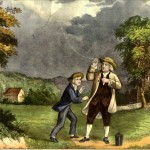 ahead. Eventually, Benjamin Franklin became an overachiever…or at least in the eyes of many people. I think he was just interested in a lot of things.
ahead. Eventually, Benjamin Franklin became an overachiever…or at least in the eyes of many people. I think he was just interested in a lot of things.
Of course, we all know about Benjamin Franklin’s career as a statesman, which spanned for decades, his years as a legislator, and his diplomatic years in England and France. He is the only politician to have signed all four documents fundamental to the creation of the US: the Declaration of Independence (1776), the Treaty of Alliance with France (1778), the Treaty of Paris (1783), which established peace with Great Britain, and the U.S. Constitution (1787). Yes, he was an all around amazing man, but I will always love the idea of his lightning experiments the best.
 Just seventeen hours after my mother passed away, my son-in-law, Travis Royce lost his grandfather, Zike Hansen. I knew Zike even before I knew my son-in-law, because I worked for Zike’s sister-in-law, Jimmy Foster and her husband, Don. When I went to work for Don and Jimmie, I had never even touched a computer. I’m sure you are wondering what that has to do with anything, but believe me, it does. At that time Zike and His wife, Virginia, who is Jimmy Foster’s sister, were working in Deadwood, South Dakota on the gambling machines. What struck me the most was that they knew about computers, and when laptops came out, they got one right away. That impressed me, because I knew so little about computers…unlike the me people know today.
Just seventeen hours after my mother passed away, my son-in-law, Travis Royce lost his grandfather, Zike Hansen. I knew Zike even before I knew my son-in-law, because I worked for Zike’s sister-in-law, Jimmy Foster and her husband, Don. When I went to work for Don and Jimmie, I had never even touched a computer. I’m sure you are wondering what that has to do with anything, but believe me, it does. At that time Zike and His wife, Virginia, who is Jimmy Foster’s sister, were working in Deadwood, South Dakota on the gambling machines. What struck me the most was that they knew about computers, and when laptops came out, they got one right away. That impressed me, because I knew so little about computers…unlike the me people know today.
When my daughter married, her husband, Travis, a new connection to the Hansen family. I had known them in a round about way for years, in that I went to school with their son, Randy, but I never knew them personally until I worked for Don and Jimmy. Now, we were family. Most people might think that it wouldn’t have changed too many things, and I suppose it didn’t exactly except that we saw a little more of each other.
Nevertheless, it seems strange to me the number of things I didn’t know about Zike Hansen. I knew that he was a Christian, because the kids got married in their church by our pastor. It was a good way to join the families. What surprised me at the funeral is that the cross that graces the alter at their church was built by, none other than, Zike Hansen. I have always though it was beautiful, but I had no idea that it wasn’t manufactured at some factory. Good job Zike!!
Another thing I had never heard about Zike is that he was struck by lightning…not once, but twice!! The first time he was about fifteen or sixteen years old…that was about 1949 or so. The second time was in the 1950s. Now I can’t imagine being  struck by lightning once, but twice…well, all I can say is, “Wow!!” Zike was never struck by lightning again, so I guess that he must have decided, that given his electric personality, it was best to…run whenever the sky started to grow even the slightest bit cloudy.
struck by lightning once, but twice…well, all I can say is, “Wow!!” Zike was never struck by lightning again, so I guess that he must have decided, that given his electric personality, it was best to…run whenever the sky started to grow even the slightest bit cloudy.
Zike Hansen was a one of a kind sort of guy, with a great sense of humor. He was the kind of man you thought of as a friend from the first time you met him. He just made people comfortable that way. I’m thankful that he knew God, because I want to see him again when I get to Heaven. In the meantime, I’m going to miss his electric personality, but I know that he and my parents are having a great time in Heaven.
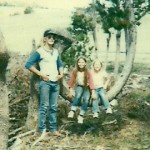 For a number of years, we went with my father-in-law and the guys in the family, to the Shirley Mountains to cut up downed wood to bring home for firewood. Sometimes the girls got to come with us. When they came, we tried to turn things into an adventure. If you wander around the woods long enough, you are bound to find something that is unusual. Sometimes trees and other plants can take on unusual forms. While exploring the area around where we were working, the kids found a tree that was so totally deformed that it went up a ways and bent straight over and then curved back up again. I suspect that it may have been struck by lightning or maybe the wind partially broke it, and then persevered to continue growing. It was, to say the least, a very strange sight…and one tough tree.
For a number of years, we went with my father-in-law and the guys in the family, to the Shirley Mountains to cut up downed wood to bring home for firewood. Sometimes the girls got to come with us. When they came, we tried to turn things into an adventure. If you wander around the woods long enough, you are bound to find something that is unusual. Sometimes trees and other plants can take on unusual forms. While exploring the area around where we were working, the kids found a tree that was so totally deformed that it went up a ways and bent straight over and then curved back up again. I suspect that it may have been struck by lightning or maybe the wind partially broke it, and then persevered to continue growing. It was, to say the least, a very strange sight…and one tough tree.
What happened to it didn’t really matter to my daughters. Corrie and Amy were completely thrilled with this tree. When it swung down to the ground, it came down quite low, and it made the perfect, goofy tree chair. They spend the rest of the day playing around it and having a great time. They liked the tree so much that they wished they could take it home. Of course, we all know that was impossible, so we took a picture of it so they could always remember it. They talked about that tree for quite some time, and have looked in other places we have camped to see if they can find more of them.
Kids can make an imaginary world using lots of things. My girls loved to play house and clubhouse, so having a chair appear out of the middle of a forest, made out of a tree, was very cool to them. It was a like a whole new way to play. They imagined living in the forest, the mountains in the old west, or maybe a tree house. I can’t say as I blamed them for coming up with so many ways to imagine their lives to be. We have all have wanted to live an adventure, and maybe…just for a minute, my girls got to do just that.
 We are a little bit past the middle of summer, and it is a time when it usually starts to get pretty dry in Wyoming, but this is not a normal year…in many places. We have had a wet year so far, but nevertheless, in the last few weeks, I have noticed more brown in our lawn than before. One would think that with all the snow we got this year, and the overflowing rivers, that the lawns would be lush and green, but that is not the case. It doesn’t take many days at almost 100 degrees to scorch the grass…not to mention the people.
We are a little bit past the middle of summer, and it is a time when it usually starts to get pretty dry in Wyoming, but this is not a normal year…in many places. We have had a wet year so far, but nevertheless, in the last few weeks, I have noticed more brown in our lawn than before. One would think that with all the snow we got this year, and the overflowing rivers, that the lawns would be lush and green, but that is not the case. It doesn’t take many days at almost 100 degrees to scorch the grass…not to mention the people.
My daughter, Amy loves the rain. When the clouds start moving in, she stars cheering. Most people hate to have it rain at the end of a work day in the summer, because it ruins their plans for the evening, but rain makes Amy come alive. When it starts to rain, it is all Amy can do not to run out the door to go drive in the rain. She says there is nothing quite like driving in the rain. Each of us has something that makes us feel alive. Of all the different things it could be, rain is probably one of the nicest.
I particularly like thunder storms, provided I am not out in them. Lightning and the ensuing thunder are God’s fireworks, if you ask me, and I think it is beautiful. I guess that is why I would rather see those clouds move in a little later in the day. Lightning is at its best after dark. I love how it lights up the whole sky, and when the thunder rolls, especially if the strike was close, the whole house shakes. It’s very cool and it always makes a cozy night at home that much more cozy.
It’s very cool and it always makes a cozy night at home that much more cozy.
There just really isn’t a negative side to a rain storm, including afterward. The lightning flashes, the thunder rolls, the rain pours down, the air smells fresh and clean, and then, after it’s all over, comes the promise…the rainbow…the last beauty of the storm. There is just something about a rainbow. It’s beauty and mystery are beyond compare. Though many have tried to explain how it might come to be, but it just doesn’t add up. It’s God’s masterpiece. His gift to us. His promise. And it is awesome. All of it, together making up the beauty of the mid-summer rain.

